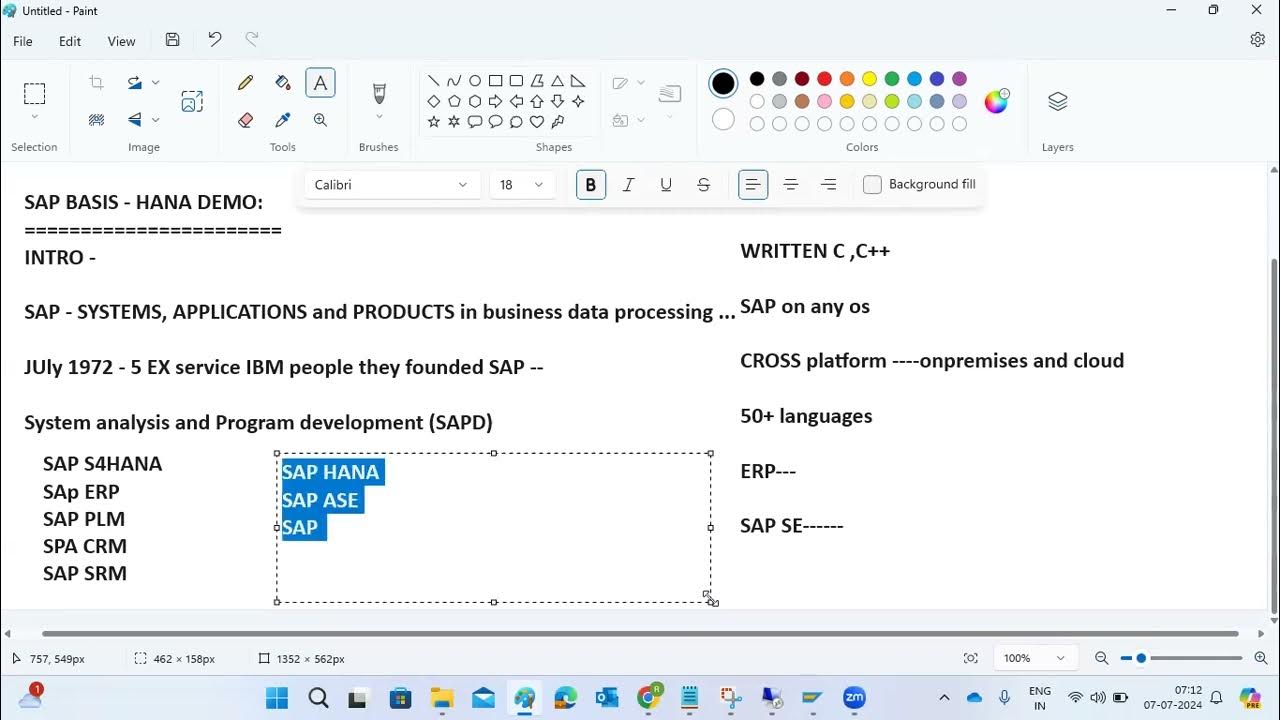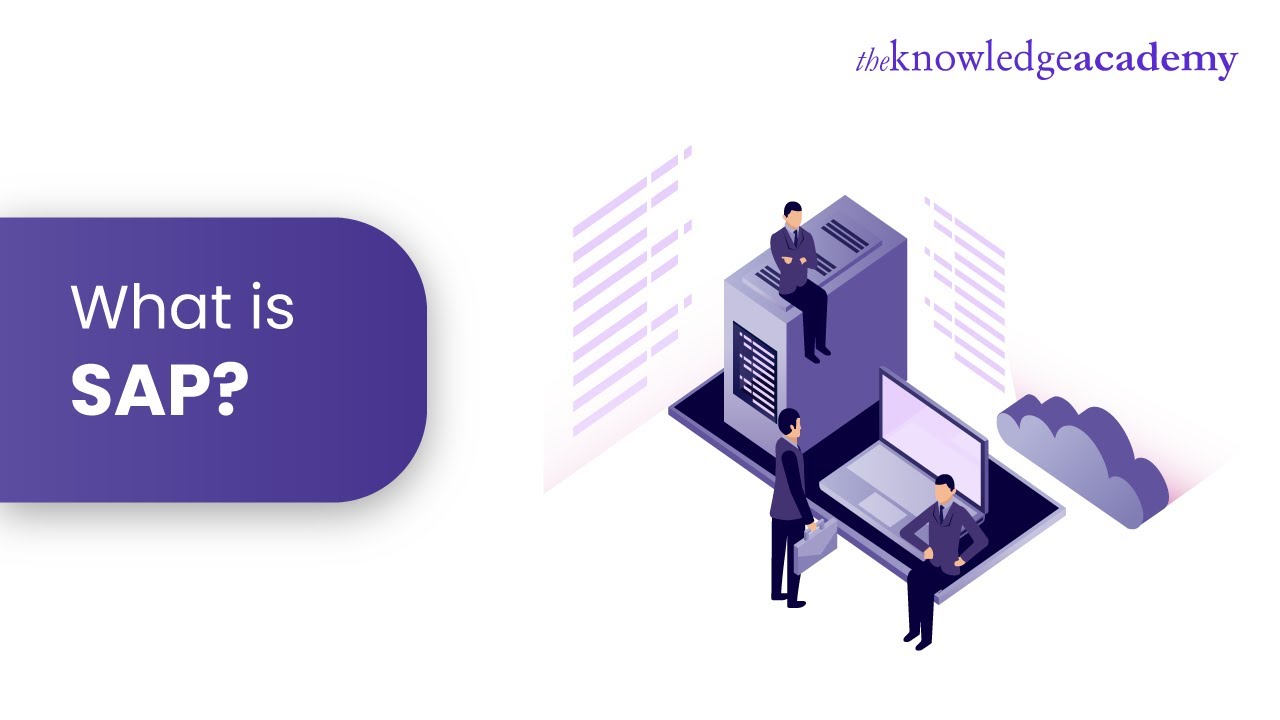SAP01 UNIT 1 INTRODUCTION
Summary
TLDRIn this introductory session on SAP Fundamentals (SAP01), the speaker introduces the SAP system, which supports various business processes such as procurement, logistics, human resources, and finance. The history of SAP is briefly outlined, highlighting its growth from a small company in 1972 to a global leader in enterprise resource planning (ERP). The session also covers the importance of SAP for multinational companies and industries such as banking, telecommunications, and manufacturing. The course aims to provide foundational knowledge on SAP, its solutions, and applications, preparing participants for practical usage and future learning in SAP's advanced modules.
Takeaways
- 😀 The SAP Fundamentals course is designed to introduce the basic concepts of SAP before advancing to more specialized topics.
- 😀 SAP is a software system that supports business processes from procurement to customer delivery, covering areas like logistics, finance, and human resources.
- 😀 The SAP Fundamental course includes seven key modules: Introduction, Navigation, System Concepts, Logistics, Financials, Capital Management, and SAP Technology.
- 😀 The history of SAP dates back to 1972, founded by five ex-IBM employees who wanted to improve enterprise resource planning (ERP) systems.
- 😀 SAP has grown significantly, serving over 250 companies in its early years and expanding to over 120 countries by 2004.
- 😀 Major companies using SAP include global giants like Nestlé, Bank Mandiri, Pertamina, and Telkomsel.
- 😀 Despite its outdated appearance, SAP is favored for its strong performance, which makes it popular among large enterprises.
- 😀 SAP products are customizable, enabling companies to tailor them according to specific business needs, especially for multinational corporations.
- 😀 SAP's core solutions include modules like Customer Relationship Management (CRM), Supplier Relationship Management (SRM), and Supply Chain Management (SCM).
- 😀 SAP NetWeaver is a key platform for integrating people, information, and business processes within the SAP ecosystem.
- 😀 Different SAP products are suited to different company sizes, with solutions for small businesses (SAP Business One) and large corporations (SAP Business Suite).
Q & A
What is SAP fundamental and why is it important?
-SAP fundamental serves as the basic introduction to SAP systems before advancing to higher levels, such as advanced or more specific units. It covers essential concepts and provides the foundation necessary for understanding and using SAP applications in various business processes.
What are the main business processes supported by SAP?
-SAP supports various business processes, including procurement, human resources, finance, and logistics. It integrates these processes across an organization to ensure efficiency and consistency.
What is the history of SAP's development?
-SAP was founded in 1972 by five former IBM employees. Over the years, SAP has evolved, starting from software development aimed at helping with business processes, to becoming a widely used enterprise resource planning (ERP) system across many industries.
How did SAP evolve over the decades?
-SAP started in the 1970s with the development of a system for enterprise resource planning. By the 1980s, it became widely used, with SAP's software being utilized by over 250 companies in Germany. It expanded internationally, and by the 2000s, SAP had transformed into a fully integrated business solution used globally across different industries.
What are the main SAP products and modules mentioned in the script?
-The key SAP products and modules include SAP Business Suite, SAP Netweaver, SAP ERP, SAP CRM (Customer Relationship Management), and various industry-specific solutions like supply chain management (SCM), project management, and human capital management (HCM).
What are the advantages of using SAP according to the speaker?
-SAP offers numerous advantages, including streamlining business processes, improving efficiency, and providing real-time data integration across various departments. It is also scalable, making it suitable for large enterprises, and has a global presence, supporting companies worldwide.
How is SAP used in different industries?
-SAP is used across various industries, such as automotive, banking, healthcare, logistics, mining, oil and gas, public sector, and retail. Its flexibility and scalability make it adaptable to different business models and requirements within these sectors.
What is the difference between SAP Business One and other SAP products?
-SAP Business One is a version of SAP designed for small to medium-sized enterprises (SMEs). It is more affordable compared to other SAP solutions but offers fewer customization options. Larger enterprises, on the other hand, may require SAP Business Suite, which can be highly customized to meet specific needs.
What is SAP's market position compared to its competitors?
-SAP is considered a leader in enterprise resource planning (ERP) systems, with widespread use across large multinational companies. Its main competitors include Oracle, though SAP is often preferred for its performance and integration capabilities despite some criticisms about its outdated user interface.
How does SAP support customization for large businesses?
-SAP offers high customization for large businesses through its enterprise solutions. Companies can tailor SAP systems to their specific needs, often involving changes to the system that are unique to the company's operations. This allows SAP to serve a diverse range of business models globally.
Outlines

This section is available to paid users only. Please upgrade to access this part.
Upgrade NowMindmap

This section is available to paid users only. Please upgrade to access this part.
Upgrade NowKeywords

This section is available to paid users only. Please upgrade to access this part.
Upgrade NowHighlights

This section is available to paid users only. Please upgrade to access this part.
Upgrade NowTranscripts

This section is available to paid users only. Please upgrade to access this part.
Upgrade NowBrowse More Related Video

03-00 SAP S/4HANA PP MM Course with Demo - Introduction

SAP 01 UNIT 3 SYSYTEM WIDE CONCEPTS

SAP BASIS & HANA - DEMO

SAP FICO Full Tutorial in Hindi | SAP FICO for Beginners | SAP INTRODUCTION

What Is SAP | SAP Training | SAP Explained In 4 Minutes | Learn SAP | The Knowledge Academy

What is SAP - The Absolute Beginner's Guide
5.0 / 5 (0 votes)